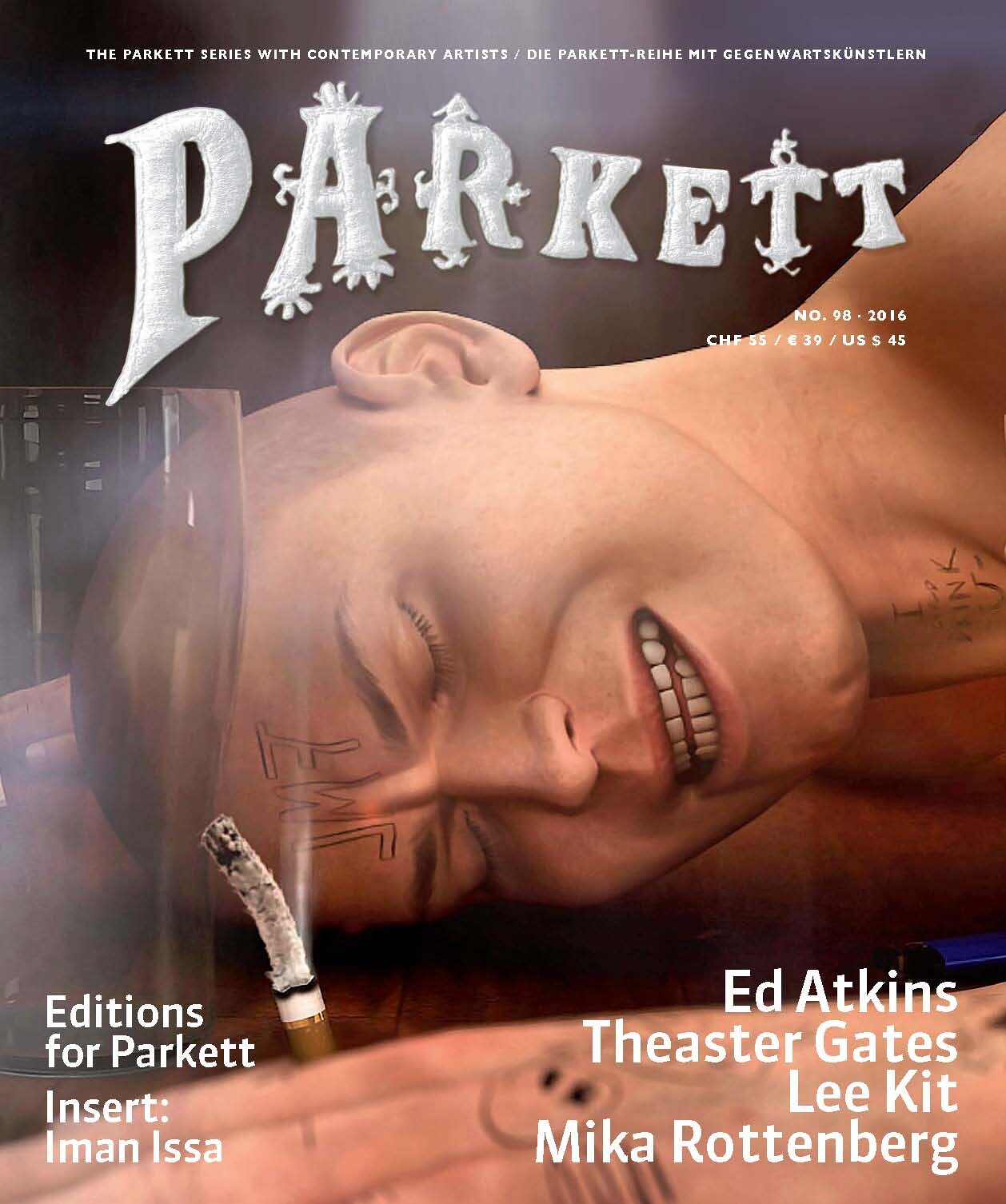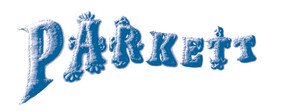The new issue will be launched in New York on July 6 at the Swiss Institute. Artist Mika Rottenberg will be in conversation with Parkett executive editor Nikki Columbus.
On view at Parkett’s Space in Zurich: In Tune with the Theme: Homage to Christian Jankowski’s Manifesta (through October 8, 2016). For more info, see here.
The videos of Ed Atkins feature solitary avatars whose prolix and euphuistic monologues plumb the sorrily sentimental and the sordidly somatic. In this issue, Andrew Durbin contemplates cadavers and death masks; Leslie Jamison considers the place of emotion in art; and Bruce Hainley imagines a conversation between Mary Shelley and the Monster.
“In these videos, emotion itself has been banished to the uncanny valley: emotion is almost human but not quite; it attracts and repels at once.”
–Leslie Jamison
For his Parkett edition Safe Conduct Epidermal, Ed Atkins creates a rubber mask from the digital epidermis of his most recent avatar, seen in the video Safe Conduct (2016) (see here).
Theaster Gates’s expansive practice—embracing sculpture and ceramics, performance and urban planning—operates as a “circular economy” connecting underserved black communities in Chicago with the institutional art world. Here Andrew Herscher assesses the particular appeal of artist-led development; Christine Mehring and Sean Keller contrast his architectural interventions with those of Donald Judd; and Dieter Roelstraete compares him with the great medieval cathedral builders.
“‘The city is my medium,’ Gates has said, and indeed, over the past five years, he has steadily transformed the psychogeography of Chicago’s South Side—renovating abandoned buildings for reuse as meeting spaces and arts centers.”
–Dieter Roelstraete
For his Parkett edition, Soul Bowl, Theaster Gates crafts black-and-white pairs of stoneware vessels (see here).
Lee Kit salvages the imprints of our bodies—stains, shadows, scrawled words—with simple materials like cotton and cardboard, creating works that overlap multiple genres. Doryun Chong looks at his work in the context of Hong Kong’s dense urban setting; Christina Li discusses his public actions and private manifestations; and Francesca Tarocco points to the significance of the hand as tool and symbol.
“In many respects, Lee is fundamentally a classical, studio-based artist, who holds onto the romance of solitude in alternately insouciant and melancholy ways.”
–Doryun Chong
For his Parkett edition, Upon, Lee Kit offers an installation as a meditation to domesticity (see here).
In Mika Rottenberg’s colorfully abject allegories of global capitalism, human traces are packaged as commercial products. Jonathan Beller outlines the conditions of contemporary aesthetic production; Amelia Jones places her in a lineage of feminist artists; and Germano Celant likens her assemblages to Duchamp’s bachelor machine.
“This literal incorporation of feminized labor into the artwork makes visible the generalized incorporation of specialized and feminized labor in the rest of commodity culture: from pearls to beauty products to nearly every commonplace item.”
–Jonathan Beller
For her Parkett edition Bubble 1–Bubble 6, Mika Rottenberg presents a custom made oyster purse, enclosing a pearl egg, which opens to release a memory stick with the video of an evanescent bubble (see here).
Also in this issue:
Claire Bishop visits choreographer Maria Hassabi’s performance at the Museum of Modern Art, New York, and reflects on its relationship to digital technology and public space; and Claire Lehmann reviews Fuck Seth Price, in which the eponymous artist cloaks a crisis of faith in the guise of a novel. The INSERT is by Iman Issa.
For more details on Parkett 98 as well as info on artists’ editions, subscriptions, and back issues, please visit www.parkettart.com.


